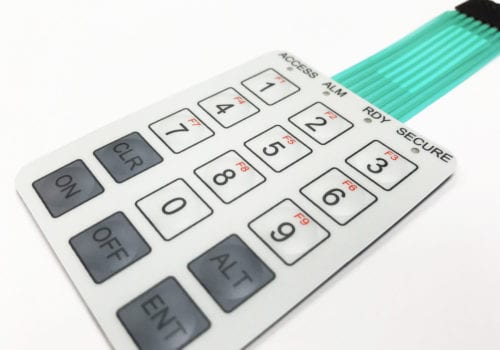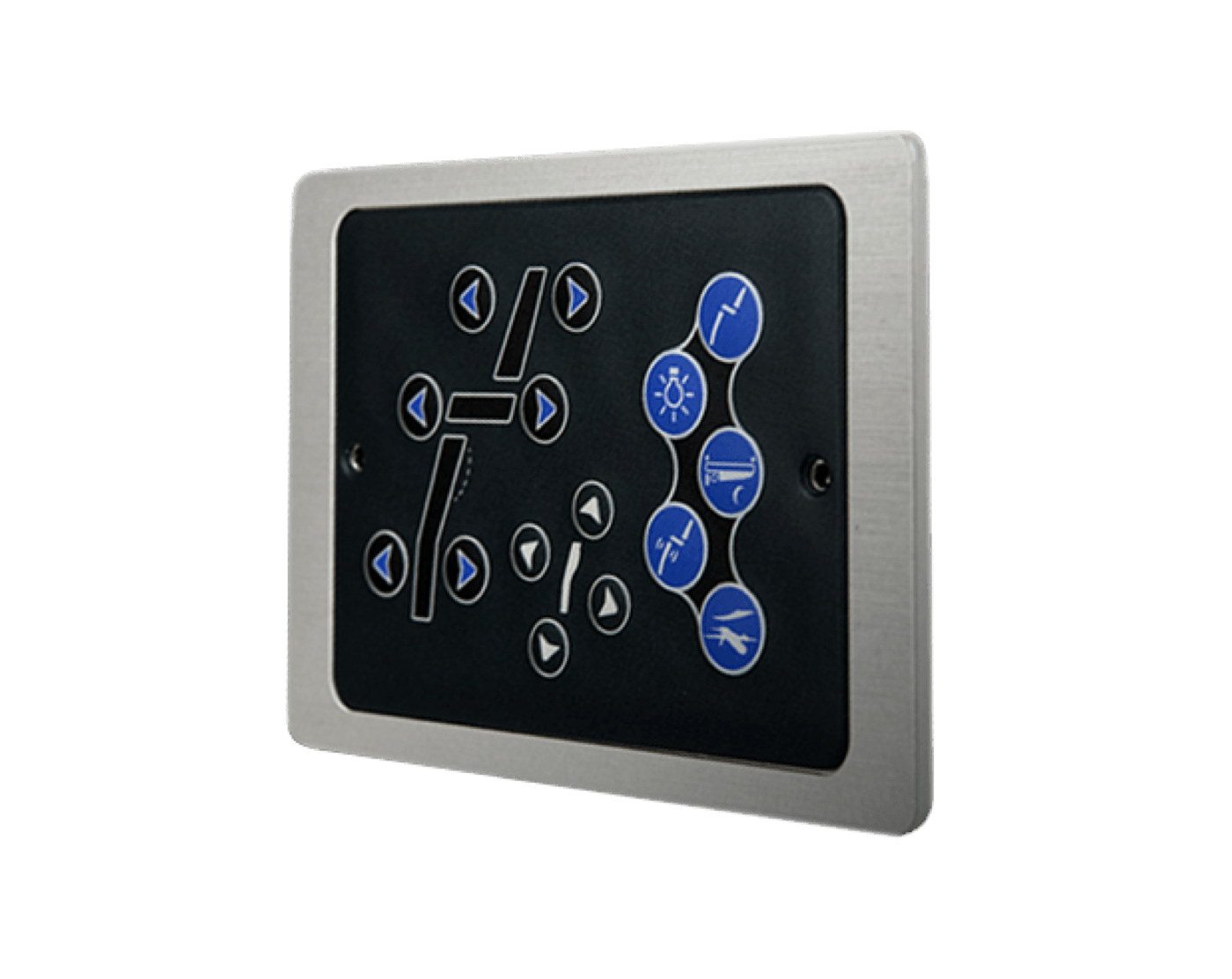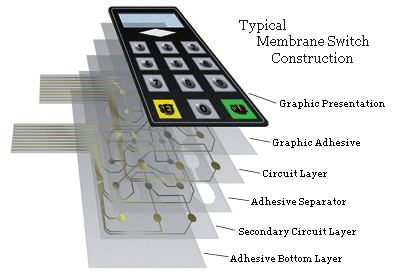Locating a trusted membrane switch manufacturer is essential for top-quality electronic interfaces.
Locating a trusted membrane switch manufacturer is essential for top-quality electronic interfaces.
Blog Article
All About Membrane Change: Recognizing Its Design and Performance
When you assume concerning the control user interfaces in modern-day tools, membrane buttons commonly come to mind. Let's explore what sets membrane layer switches apart from various other control systems.
What Are Membrane Layer Buttons?

Their smooth nature makes them simple to clean and resistant to dust and dampness, an important attribute in lots of atmospheres. Membrane switches can likewise be customized concerning shape, dimension, and graphics, enabling makers to create unique user interfaces customized to specific products. And also, they're lightweight and slim, which helps in decreasing the total bulk of gadgets. Generally, membrane switches play a substantial function in enhancing customer experience throughout a vast selection of applications.
How Membrane Switches Job
When you push a key on a membrane layer switch, it triggers an uncomplicated yet reliable device. The top layer, usually made from versatile product, presses down onto a conductive layer below it. This activity bridges the gap in between conductive traces, finishing an electrical circuit. As quickly as the circuit shuts, it sends a signal to the tool's controller, which translates your input.
You'll discover that the tactile comments differs based on the switch style, supplying either a soft click or an extra pronounced action. Once you release the secret, the membrane layer go back to its initial position, reopening the circuit and stopping the signal. This process occurs nearly immediately, ensuring a responsive individual experience.
Membrane buttons are prominent as a result of their durability and resistance to dirt and moisture, making them perfect for different applications, from family devices to clinical gadgets. Comprehending this operation aids you appreciate their prevalent usage.
Key Components of Membrane Switches
Recognizing the essential components of membrane switches is essential for comprehending their functionality and design. At the core, you'll discover the graphic overlay, which gives the aesthetic user interface for users. Underneath that, there's a spacer layer that divides the circuit layers, ensuring that they don't make get in touch with up until pressed. The circuit layer is where the magic happens; it contains conductive traces that finish the circuit when you press the switch. An additional important element is the adhesive support, allowing the switch to abide by surfaces firmly. Ultimately, the safety layer shields versus environmental factors and put on, expanding the button's lifespan. Each part plays a significant duty in making certain reputable performance and customer interaction. By comprehending these components, you'll get insight right into how membrane switches operate and their value in numerous applications.
Materials Used in Membrane Change Design
The efficiency and toughness of membrane layer changes greatly depend upon the products used in their design. You normally experience polyester and polycarbonate as key substrates due to their exceptional toughness and versatility. These products resist scratches and chemicals, making them ideal for requiring settings.
The conductive layers commonly utilize silver or carbon, chosen for their reliability and conductivity. membrane switch manufacturer. Silver gives superior performance, while carbon is a cost-effective alternative. For the overlay, you might consider a matte or glossy surface, relying on your visual demands and individual experience
Adhesives play a vital duty also; they bond layers firmly and ensure long life. Ensure to choose adhesives that hold up against ecological aspects like temperature and humidity. Do not forget the relevance of an excellent printing method for graphics, as it boosts both functionality and aesthetic charm. Selecting the appropriate materials will guarantee your membrane layer switch stands the test of time.
Design Factors To Consider for Membrane Buttons
While developing membrane layer buttons, it's crucial to think about numerous factors that affect their functionality and customer experience. Begin by concentrating on the design and button dimension; make sure they're intuitive and very easy to navigate. Consider the tactile comments you wish to provide-- will customers need an obvious click or a softer touch? Additionally, assume regarding the products you'll make use of, as they'll influence sturdiness and aesthetics.
Do not overlook the graphic layout; clear labeling and color comparison are considerable for presence. Confirm your design suits environmental factors, like moisture or temperature level variants, which could impact efficiency. Lastly, bear in mind the relevance of screening models with actual users to you can check here collect responses and make needed adjustments. This repetitive procedure aids you fine-tune the style, validating it fulfills both useful and visual demands efficiently. By very carefully taking into consideration these elements, you'll create a membrane layer switch that improves functionality and fulfillment.
Applications of Membrane Layer Switches
Membrane layer buttons are flexible parts found in various applications, from commercial devices to customer electronics. You'll see their effect in devices that call for long lasting interfaces and in devices that gain from streamlined styles. Comprehending these applications aids you appreciate the capability and usefulness of membrane layer buttons in everyday modern technology.
Industrial Devices Usage
When you're wanting to enhance the functionality of industrial tools, membrane switches provide a trustworthy solution that integrates durability with straightforward style. These switches are perfect for harsh settings, giving resistance to dirt, moisture, and chemicals. You'll discover them in control panels for manufacturing machines, a/c systems, and clinical devices, where precision and responsiveness are important. Their reduced profile means they fit flawlessly right into numerous tools, saving important room while preserving convenience of use. With adjustable graphics and backlighting choices, you can create an intuitive interface for operators, improving effectiveness and security. Plus, their lengthy life-span decreases maintenance expenses, making them a wise investment for your industrial applications. Embrace membrane layer switches to streamline your procedures and enhance general performance.
Consumer Electronics Combination
In the domain of consumer electronic devices, membrane layer buttons play an essential duty in enhancing user interaction and tool performance. Membrane layer buttons additionally guarantee sturdiness and resistance to dust and moisture, expanding the life expectancy of your electronics. By choosing membrane buttons, you boost not just the capability however additionally the style of your tools, making daily communications smooth and satisfying.
Benefits and Negative Aspects of Membrane Layer Switches
While membrane layer switches supply a variety of advantages, they likewise come with some disadvantages that you should take into consideration. One significant benefit is their small layout, making them ideal for space-constrained applications.

Membrane switches can have a much shorter lifespan compared to mechanical switches, particularly under heavy usage. They can also be less tactile, which might influence individual responses throughout procedure. Balancing these pros and disadvantages will aid you determine if membrane buttons are the best fit for your project.
Regularly Asked Concerns
How Much Time Do Membrane Layer Switches Generally Last?
Membrane layer changes typically last in between 5 to one decade, relying on use and ecological conditions. You'll want to assess elements like wear, exposure to moisture, and temperature changes to evaluate their long life effectively.
Can Membrane Changes Be Personalized for Details Layouts?
Yes, you can personalize membrane layer buttons to fit details layouts (membrane switch manufacturer). You'll have the freedom to choose shades, shapes, and layouts that match your task's demands, guaranteeing they mix flawlessly with your total aesthetic
What Is the Cost Range for Membrane Switch Over Manufacturing?
The cost array for membrane layer button manufacturing typically drops in between $1 and $10 per device, depending on factors like layout intricacy, amount, and products. You can get quotes from makers to locate the very best option.

Are Membrane Changes Water Resistant or Resistant?
Membrane layer switches can be created to be water resistant or immune, relying on materials used and building approaches. If Your Domain Name you need them for damp settings, ensure you define those needs during the design process.
Exactly How Do Membrane Switches Over Compare to Standard Buttons?
Membrane buttons are normally thinner and more adaptable than standard buttons, using a smooth layout. They're commonly simpler to cleanse and incorporate, yet may not provide the responsive feedback you're made use of to with mechanical options.
Conclusion

Report this page